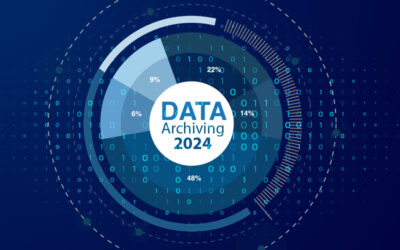The rising demand to comply with changing regulations, reduce costs and satisfy changing customer demands is exerting immense pressure on the business processes that rely heavily on data. This is especially significant when it comes to the banking sector. Regarded as one of the fastest-changing sectors, banking institutions need to bring their A-game to the table to keep up with the changes as well as address the pain points that arise when they try to meet the demands of radical digital transformation. For banking institutions, the challenges of secure document processing and conversion remains at the top of the stack. Automation is the perfect solution to some of these major pain points for banks. With automation, banks reduce operational costs, while performing more efficiently with greater resilience and adaptability to the market. In addition, the technology helps optimize document scanning and document conversion services.
Automation of Banking Documents – Key Benefits
A 2017 report by McKinsey identified an interest by banks to deploy automation technologies to improve productivity, cost savings and improvement in customer experiences. Today, banks are showing an increasing interest in technology-driven solutions. Investing in automation technologies has made the banks come out stronger than ever. With automation, banks reduce operational costs, while performing more efficiently with greater resilience and adaptability to the market. However, the concept of automation does not replace the work of banking and finance teams. Rather, it adds value to the whole process by reducing the time-consuming and draining work that goes into drafting key documents.
Here discussed are some of the key areas wherein automation technology can benefit banking institutions –
- Regulatory Compliance – Complying with KYC regulations is an important aspect for all commercial banks. This means before a customer can be allowed to open an account, banks need to verify who they are and that they are not laundering money or engaged in fraud. In fact, this can be a challenging process involving back and forth communication between the bank and the client. As such a long process will not fit into a fast-paced industry; a customer can easily switch to the next option. But at the same time, the bank cannot skip this process. This is the point wherein document automation provides a quick and reliable solution. An online form can be given to customers to fill in their details as well as add identification documents. All this information is captured and verified automatically. This results in speedy completion of the KYC document process. Designed to electronically capture key data, the document can be used to verify a customer’s identity and generate the relevant compliance documents.
- Improve Efficiency – Automating the drafting process creates documents at a rapid pace. Where it could have taken weeks or even months to draft documents by manually inputting standard precedents, it can now take a matter of minutes. In addition, automation also allows users to amend their document contracts in rapid time. On one hand, using a questionnaire structures the data in each transaction, providing great visibility to the agreement. On the other hand, it also prevents that information from having to be re-entered into the document. This is the result of using linked data points that are inextricably connected to a question. In short, users only need to answer a question once to dynamically update all the input fields in the agreement.
- Change in Customer Demand – Today, the bank customer is highly tech-savvy and attached to the digital world. It is near to impossible to have a client fill a paper application and then return it to the bank for a clerk to enter the information into the file. Customer demands are also being determined by a new demographic of clients. Customers expect to interact with their banks online and this requires smarter technology to capture data. Adopting document automation software can help support mobile banking. With the use of automated templates, banks can onboard new clients with minimal involvement of employees and assist them well, providing withdrawal slips, bank statements, notifications, and so on, digitally.
- Data Entry Errors – Reports from Gartner (2017) suggest that dirty data cost an organization 15 million dollars in 2017. Dirty data consists of information that is inaccurate, inconsistent as well as incomplete. For commercial banks, this usually occurs when data is transferred from paper to a system. Errors can occur in the form of misspelled names, inaccurate entry of figures, mixed up addresses and so many other errors. Often, these are not noted immediately and when they are noticed, it can take a long time to reconcile the data. To avoid human error, some commercial banks institute thorough manual checks but this can take up about 50 percent of an analyst’s time. Automating document generation can accurately capture data, verify questionable information, and notify the user in case information is incomplete, false, or entered in the wrong field. In short, automation makes data entry tasks easier and it saves the institution a lot of money and time.
- Track the Status of Documents – Banking transactions involve a huge volume of documents. As these documents are passed between parties via email, it can be difficult to keep track of the latest draft, or you may have to dig back through email chains to find the relevant documents. Automation offers a single repository for all the documents relevant to a transaction. These documents can be tagged, or put into folders, which makes it easy to find the required documents relating to a particular transaction, as well as see the progress of those documents right through to their signature. Automation provides an opportunity to surface the information which is contained within the documents into visual, digestible information.
- Loan Approval Time – Typically, a loan approval process involves several stages like – customer management, credit analysis, presentation, approval, and portfolio risk management. All these processes involve a large number of documents and takes up a lot of time. In a commercial bank, due to increasing pressure from competitors, and pressure from clients, this process will be rushed thereby increasing the chances of errors. Automating the process right from the beginning will make it a smooth procedure with no errors, and loans can be approved within minutes. Document automation eliminates the need for double entry of customer information which usually takes up a considerable amount of time and creates room for mistakes. Banks can serve clients remotely and customers will be more satisfied carrying out such transactions on mobile devices.
- Improved Efficiency and Capacity to Do More Work – The time spent drafting transactional documents is a frustrating task in banking sector. Often, due to the volume of documents, this administrative burden reduces a legal team’s capacity to fairly low-value work. It may take weeks, or months to manually create a first draft. In such cases, document automation can draft legal documents in a matter of minutes. When the task gets automated, employees will have more time to focus on higher-value work. This increased efficiency will have considerable benefits to the company’s capacity to take on more client work without needing to work longer hours.
- Improved Accuracy – Manually drafting documents involves a higher risk of error. With document automation, there is no need to re-write the same word a million times over. Document automation can link each field to a singular question, so users only need to write that word once. While the chances of an error in the questionnaire are low, even if one is made, it is easy to amend. Users can be sure that the information entered in the questionnaire will be consistent throughout the document, ensuring a higher level of accuracy.
With an increasing younger clientele, commercial banks have a growing need to embrace new-age technology to provide better services to their customers. Document automation is a solution that offers the ability to serve more clients without even getting them to open the bank door. For banking institutions, automating the document drafting process will play a significant role in improving the quality and consistency of documents. An automated document system can also help streamline business processes, and improve efficiency thereby reducing costs.
As mentioned in the blog, document automation has become important in all industries, as it helps to make the process of storing and retrieving documents so much simpler. Banking institutions are digitizing their processes and records with the help of document scanning solutions to optimize operations and boost efficiency. This is a great way for the banking sector to streamline their financial operations.




